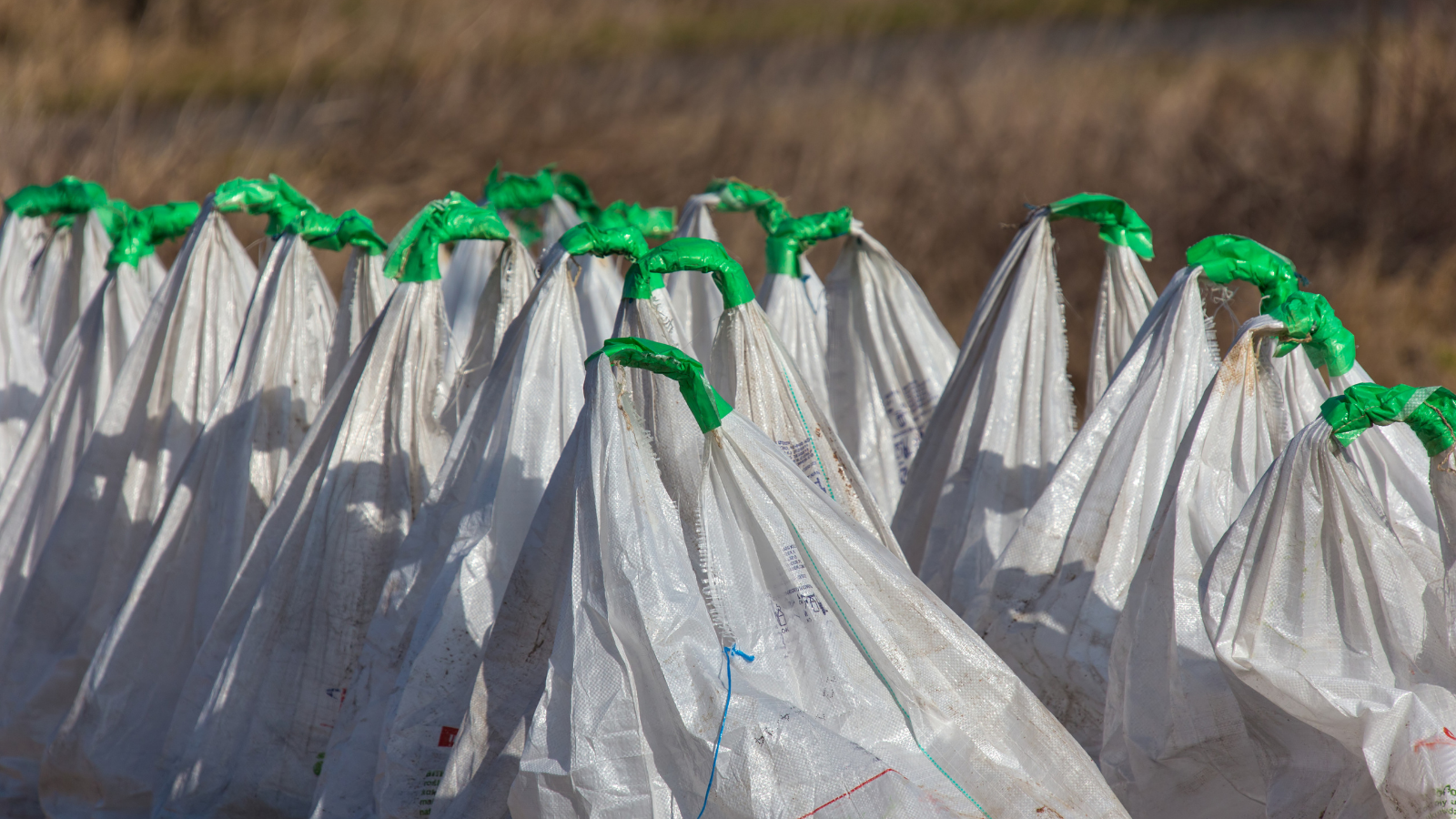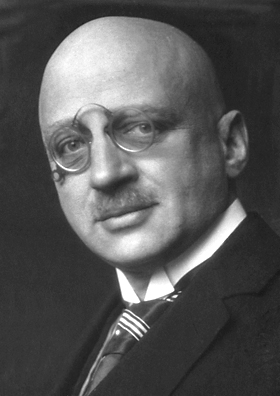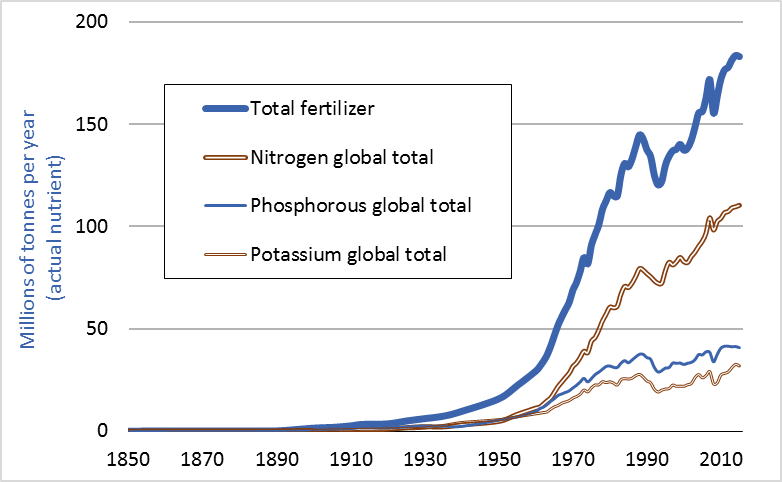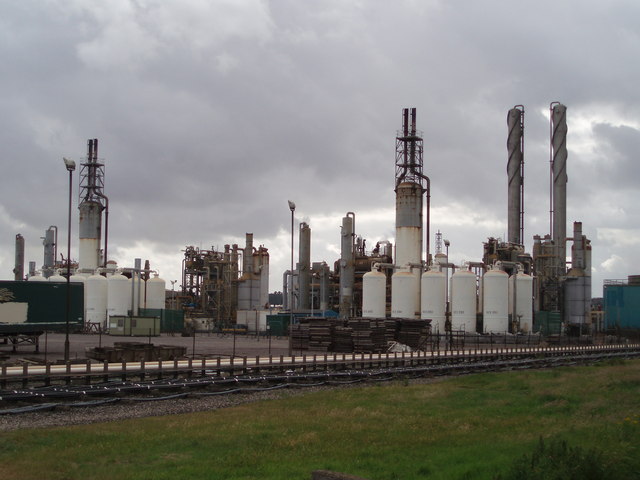Ed. note: This article first appeared on ARC2020.eu. ARC2020 is a platform for agri-food and rural actors working towards better food, farming, and rural policies for Europe. Part 1 can be found on Resilience.org here.
In the second installment of an exclusive series on regenerative agriculture, Peter Dunne unpacks the rise of agrochemicals and the noxious legacy of the Green Revolution. He argues that regenerative agriculture is a reason for hope, if only we can put soils first in our farming and food policy. Full series will be available to download as a pdf.
The rise of the agrochemical solution
Not until the post-second war era did agriculture begin to fully embrace the use of chemistry, with developments in pesticide technology, to the extent that in 1998, there were 20,000 commercial products registered as ‘pesticides’ by the US Environmental Protection Agency. Although substances with pesticidal activity have been known since antiquity, the sheer number of synthetic compounds listed as pesticides remains quite breath-taking.
The munitions industry that had developed during the Second World War, when the U.S. government had built ten new plants for ammonia production, now had excess capacity and the ammonia had to be put to productive use. Thus, in some ways, claims that industrial agriculture and the armaments and chemicals industries have been bedfellows for most of the last century are hardly surprising since we know that the impetus for the research that led to the development of the Haber-Bosch process predated the German war effort in World War One. An ever-closer relationship has ensued ever since.
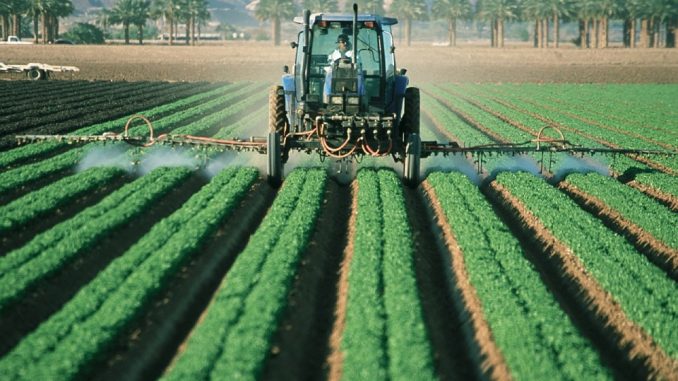
‘Green Revolution’ technologies came with ecological trade-offs which are becoming more apparent. Image credit: Public domain
The extensive costs of the Green Revolution
Agricultural intensification over the last 50 years has had significant negative effects. For example, in an ecological context it has arguably been the dominant contributor to habitat loss. There have been a myriad of other so-called “negative externalities” from prophylactic pesticide and fertilizer usage.
Expansion and globalisation of food production over the last half century has been facilitated by the use of high-yielding crop varieties, fertilisation, irrigation, and use of biocides including pesticides, fungicides and herbicides (often colloquially referred to as the ‘Green Revolution’) but these technologies have embedded ecological trade-offs which are becoming more apparent.
A quote attributed to the renowned German chemist Justus von Liebig (1803-1873) was that
“agriculture differs essentially from the cultivation of forests in as much as its principal object consists in the production of nitrogen under any form capable of assimilation; whilst the object of forest culture is confined to the production of carbon”.
It is an observation that should come to haunt us.
Firbank et al. (2008) stated that “agricultural intensification is best considered as the level of human appropriation of terrestrial net primary production”. Humans, as the apex species have moved beyond predation and subsistence to actively appropriating and managing (or as many contend, mismanaging) biogeochemical resources. That we have appropriated a disproportionate quantity of terrestrial net primary production is now reflected in the decline and, in too many cases, the extinction of other species. Hence the assertion of mismanagement of our Planet’s biogeochemical resources.
Use of the term ‘biogeochemical resources’ is instructive in this regard, as industrial civilization’s reliance on mined phosphorus and potassium, and vast quantities of hydrocarbon deposits, both as a fuel source and substrate for nitrogenous fertiliser manufacture is fundamentally unsustainable. Increasing levels of reactive nitrogen in the biosphere is one area where modern industrial agriculture is creating huge environmental problems.
Nitrogen crisis
Apart from climate change, habitat, and biodiversity loss, the ‘Nitrogen Crisis’ is the other activity where civilisation has likely exceeding a so-called ‘safe operating space’. Modern, industrial, or conventional agriculture relies to a large extent on application of nitrogen-containing, and other fertilisers, with excessive quantities of reactive nitrogen released to the biosphere.
A) The electrical energy in lightning can cleave the triple bond in atmospheric nitrogen gas, forming nitric oxide, which dissolves in rain so that it can eventually be supplied to plants, via the soil, as nitrates. A forerunner of the Haber-Bosch Process, the Birkeland-Eyde Process, developed in Norway used the same principle. Image credit: Thomas Bresson / CC BY (https://creativecommons.org/licenses/by/3.0)
B) Symbiotic nitrogen fixing bacteria, Rhizobia, inhabit the root nodules in leguminous plant species. Image credit: By Stdout – http://allthingsplants.com/plants/photo/73597/. This photo was taken by Dave Whitinger at All Things Plants. Released under the GFDL, as documented here., CC BY-SA 3.0, https://commons.wikimedia.org/w/index.php?curid=19212279
C) Bagged commercial fertiliser preparation – the numbers indicate the percentage composition of the elements N, P and K.
D) Fritz Haber, co-inventor of the Haber-Bosch Process. The contribution of nitrogen fertiliser to global population growth, from the discovery of elemental nitrogen by Lavoisier, and including the work of Haber and Carl Bosch, is detailed by Vaclav Smil in his work “Enriching the Earth – Fritz Haber, Carl Bosch and the Transformation of World Food Production”. Image credit: The Nobel Foundation / Public domain
E) Fertiliser use has increased 23-fold since 1950 [with associated hydrocarbon energy use], agricultural yields have increased, as has the human population [compressing the space of other species]. Synthetic nitrogen (and phosphorus) fertilisers have dramatically altered the global nutrient budget, global nutrient fluxes and spatial distribution, as well as water quality, greenhouse gas emissions and their feedbacks to the climate system. Image credit: Darrin Qualman via Peter Dunne https://www.darrinqualman.com/historic-nitrogen-fertilizer-consumption
F) A fertiliser production plant uses methane ’natural’ gas to produce ammonia, typically in the Haber-Bosch Process. It needs huge amounts of energy. One kg of N as NH3 requires 43,000 BTU (British thermal units) or 10,831kcal to manufacture. Image credit: By Sharon Loxton, CC BY-SA 2.0, https://commons.wikimedia.org/w/index.php?curid=9311811
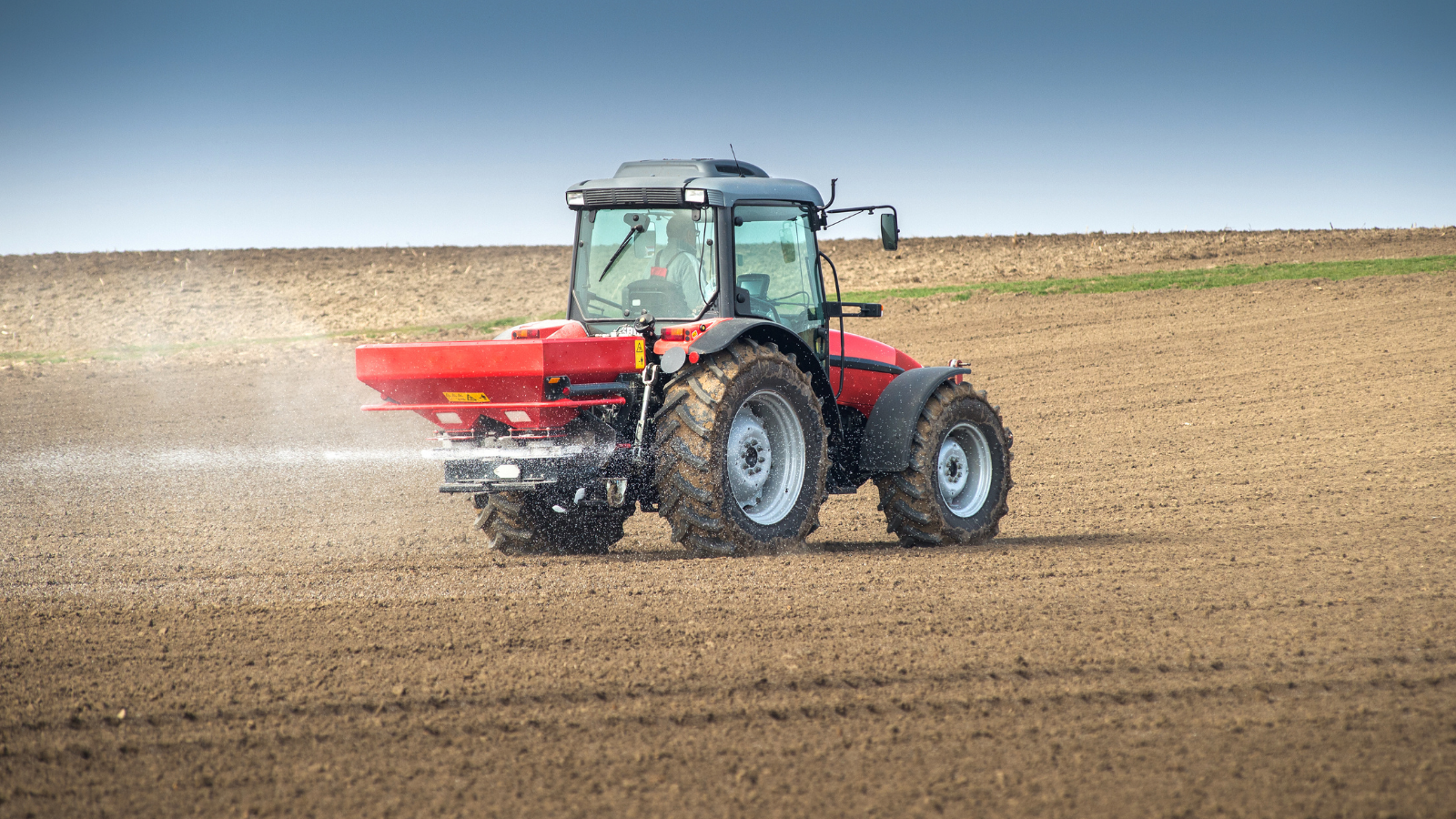
G) Agricultural use (tonnes, t) of nitrogen (N), phosphorus (P) and potassium (K) fertiliser in the Republic of Ireland (ROI) for 2016 was reported as 302,390t, 113,166t and 141,024t, respectively. Average farm use for grazing for each of these nutrients (N, P and K, respectively (as kg/ha)) was 63, 5 and 12kg/ha, although dairy farms used up to 129kgN/ha. Before the advent of synthetic geochemically-based mineral fertilisers, there were predecessors such as Chilean saltpetre and guan, but there was overwhelming reliance on biological nitrogen fixation, typically by leguminous plants, and recycling of nutrients by integrating livestock into cropping systems, and practicing mixed farming, where nutrients might be recycled within a farm or a local area. So important are grain legumes to global food supplies that the 68th General Assembly of the United Nations declared 2016 the International Year of Pulses. At an ecosystem scale, the capacity of biological nitrogen fixers to convert elemental nitrogen to organic nitrogen-containing compounds often exceeds 100kg per hectare per annum where symbiotic nitrogen fixers are available, but the mechanisms that control the nitrogen limitation in ecosystems determine the effects of nitrogen deposition from anthropogenic sources. Biological nitrogen fixation remains substantial at global scale, with approximate estimates of between 50 and 70 Tg N fixed biologically in agricultural systems and thus, this offsets some of the energy needed to manufacture ammonia-based fertilisers
Ecological challenges
In addition, other practices in modern, industrialised agriculture create myriad ecological challenges. Often, these are attributable to a modern agriculture that tends towards specialization, simplification, aggregation, consolidation, and centralisation. An inexorable shift towards larger farms, fewer farmers, more mechanisation, lower spatiotemporal diversity of crops, less seasonal and inter-annual diversity of cropping, monocropping itself, less integration of livestock with crops, less biomimicry and failing to emulate ecological systems has followed. Thus, while the first ‘Green Revolution’ undeniably contributed to decreasing global hunger there are attendant trade-offs.
Negative effects on ecosystems continue to be recorded. Many are attributable to aberrations in nutrient and elemental cycles that exert effects at different trophic levels. Further, there are the effects of specific agricultural chemicals on plants and animals, be they vertebrates or invertebrates.
Evidence is increasing that intensification of agriculture, which connotes increased use of biocidal agents such as insecticides, pesticides, fungicides, and herbicides, is associated with declines in migratory songbird populations, whether in Europe, the United Kingdom or the United States. This can be due to the use of fungicides as seed coverings impacting on granivorous avian species or insecticides impacting on the food supply of aerial insectivorous species.
Another mechanism can be that regulatory and economic incentives geared towards agricultural intensification lead to hedgerow removal for field consolidation. These practices lead to habitat loss for a range of mammalian, avian and invertebrate species. Paquette et al. (2014), conducting a study along a gradient of agricultural intensification amongst 40 farms, each with 10 nest boxes, over an area of approximately 10,200km2, reported a 19% reduction in occupancy rate of the aerial insectivorous tree swallow Tachycineta bicolor over a 7-year study interval (2005-2011) in southern Québec, Canada. They also concluded that reproductive success was negatively impacted by intensive agriculture.
Ingestion of field-realistic quantities of the neonicotinoid insecticide imidacloprid (1.2 or 3.9 milligrams per kilogram body mass), by white-crowned sparrows (Zonotrichia leucophrys) during migratory stopover caused a rapid reduction in food consumption, mass, and fat and significantly affected their probability of departure. Experimentally dosed birds in the high-dose treatment stayed a median of 3.5 days longer at the site of capture after exposure as compared with controls and were thus less likely to regain fuel stores or recover from intoxication.

Tree Swallow young and parent. Intensive agriculture leads to habitat loss for the tree swallow and hampers successful breeding. Image credit: Andy Reago & Chrissy McClarren via Wikimedia Commons CC BY
Worldwide decline of insects is well documented. Lepidoptera, Hymenoptera and dung beetles (Coleoptera) appear to be the taxa most affected, whereas four major aquatic taxa (Odonata, Plecoptera, Trichopterm and Ephemerotera) have already lost a considerable proportion of species.
Affected insect groups not only include specialists which occupy ecological niches, but also many generalist species. In almost all cases, these will have implications for agricultural systems because of their ecosystem service provision, such as those provided by dung beetles but also by pollinators.
Hallmann et al. (2017) reported a 27% decline in total flying insect biomass in protected areas in Germany. Any decline in insect pollinators is very concerning due to the contribution of pollinator-mediated crops to global micronutrient supplies, although Ellis et al. concluded that “the importance of pollinators to human nutrition depends critically on the composition of local diets, and cannot be reliably predicted from global commodity analyses.” In pastoral landscapes, dung beetles provide important ecosystem services but use of parasiticides such as macrocyclic lactones and synthetic pyrethroids have been associated with changes in dung beetles’ community structure – endocoprid (dung dwelling) versus paracoprid (dung burying) species – and functional assemblages.
Ivermectin exposure has been exhibited to exert morphological and physiological effects in dung beetles and other insects and effects can also be trans-generational. Such effects are particularly important to note and quantify since dung beetles are seen as drivers of ecosystem multifunctionality in so far as the ecosystem services they provide link processes in the biosphere (dung removal), lithosphere (soil nutrient cycling) and atmosphere (greenhouse gas emissions) to human interests, specifically pastoral ruminant farming, in the anthroposphere.
While dung beetles are a good indicator of ecosystem health and functionality, so are earthworms. Antibiotic exposure caused DNA damage and biochemical toxicity on the earthworm Eisenia fetida, but antibiotic residues in manure of treated livestock can also exhibit more insidious effects via deleterious effects on the soil microbiota. The critical role of soil microbiota in soil health and quality and on the health of higher trophic levels and whole ecosystems is now becoming evident.
The interaction between the biosphere, atmosphere and lithosphere are crucial since the lithosphere processes, i.e. soil functionality, can legitimately be seen as the fulcrum around which any aspirations of genuinely sustainable food production pivots. Thus, it is the hub of what is regenerative farming.
The hope that is re-generative agriculture?
“…And they shall beat their swords into ploughshares, and their spears into pruning hooks: nation shall not lift up a sword against nation, neither shall they learn war anymore. But they shall sit every man under his vine and under his fig tree: and none shall make them afraid…” Micah 4:3,4.
Regenerative agriculture offers us hope in a time of immense challenge but to suggest that it does is still controversial. The recent rise of the Real Oxford Farming Conference, a showcase for ‘alternative’ agriculture would indicate otherwise. For many, however it is a retrograde step that revolts against their perceived scientific advances [albeit they are too often agrochemical] of the last 60 years.
Henry Wallace was Vice President of the United States, having also been US Secretary for Agriculture and a strong proponent of organic farming. He was part of a strong movement to protect real biological farming which included William Albrecht and J.R. Rodale. Their beliefs were fuelled by Sir Albert Howard and Friend Sykes, notable proponents of the core essence of farming, which was biological, and which viewed soil as the fulcrum around which the whole system revolved. Sir Albert Howard is regarded by many as the Father of Organic Farming. They all can be dismissed as men of a yesteryear. Or they can be recognized as possessors of a wisdom that we have chosen to forget.
Where conventional agriculture has focussed on the chemical and physical properties of soils, and has arguably viewed soil as little more than a sterile growth medium, regenerative agriculture seeks to re-integrate knowledge of the soil food web and the biology of soils into agricultural thought processes and decision-making, and to apply this knowledge to both short- and long-term decisions.
Moreover, apart from the soil mesofauna and microfauna which play vital roles in the soil food web, the ability of soils, under appropriate management practices, to sequester atmospheric carbon as “soil organic carbon, is seen as critical to the practice of agriculture that is regenerative. It is a fair description to say that regenerative agriculture is about a soils-first farming and food policy.
Soil-carbon-first regenerative agriculture
Sequestering carbon to build genuine soil fertility is its primary role, any climate change mitigation is secondary. The relative balance of these two objectives is, however, frequently being confused by a focus on the latter whereas it is the former that will enhance food security, restore biodiversity, improve water retention and, in general, allow the biosphere to regain its natural functionality.
The extent to which agricultural management can sequester carbon remains debatable. This is not least because sequestration of carbon in soil is, in the absence of any agricultural management interventions, a generally slow, decades-long process. Further carbon storage in a given soil volume is finite and can be reversible, either through poor soil management or the expediency of utilizing the sequestered carbon [aka the soil fertility] to produce food, fibres, or biomass-based fuels.
As a climate mitigation tool, the benefits of carbon sequestration into soils may be offset by increases in other agricultural greenhouse gases, methane and nitrous oxide. To a degree agriculture cycles carbon, but too often the sequestration of carbon through photosynthesis is itself fuelled by the use of fossil fuels. Regenerative agriculture seeks to minimize these fossil fuel inputs and to close cycles.
Measurement of soil organic carbon, and thus soil carbon sequestration, is not easy. It has not been addressed to the same degree as carbon emissions. This must now change.
The exemplar, known colloquially as “4 per mille”, launched at the 21st Conference of the Parties to the United Nations Framework Convention on Climate Change (COP21) in Paris (November 30 – December 15, 2015) aspired to increase global soil carbon stocks by 0.4 percent per annum to offset global greenhouse gas emissions, but even this initiative continues to be debated regarding its likely effectiveness. It should, however, first be judged on its importance in building a sustainable food system and food security and only second as a climate mitigation tool. It is the only route to the first while it is likely that it will also deliver climate change mitigation, even if such is difficult to quantify.
Maintaining soil organic carbon stocks falls under the United Nations Sustainable Development Goal 15 (SDG15). However, agricultural and land management that facilitates carbon sequestration will likely have attendant benefits for biodiversity. Thus, a singular focus on carbon dynamics as the primary motivation for financially incentivising regenerative practices, or using the alternative descriptive preferred by Graham Harvey, “carbon farming”, without consideration of collateral benefits for biodiversity, ecosystem services, nutrient and elemental cycling and environmental remediation, and the time-scales over which these co-benefits may be delivered is inappropriate.
Soil carbon building and aligned financial considerations must not be measured over the short-term. Carbon is elemental to food production, and it is cycled. The goal must be to ensure that the cycle operates as naturally as possible and with few fossil-fuels fuelled interventions, be they for motive power or fertilizer or pesticide production. Completing broken nutrient cycles where urbanized humans and now, increasingly so, farm animals exist is a major driver of fossil fuel usage and, hence, climate change. We must recognize that carbon cycling and sequestration are not one and the same.
Notwithstanding the need to dramatically improve the efficiency with which carbon is cycled within agriculture, carbon sequestration is essential to what must underpin all food policy, soil restoration. Whereas carbon cycling revolves around more immediate practices on the one hand and greater spatial awareness around agricultural and, in particular, animal farming, investments on the other, the systemic change that will deliver the long-term accumulation of soil carbon stocks will not happen within a culture of short-termism. Measurable, valuable, increases in soil carbon will not accrue after one or two years of regenerative practices, thus any contingent agricultural support must be focused upon system transformation and rewards targeted at sustained soil carbon accumulations.
This is an extract from the paper ‘The Rise of Regenerative Agriculture? Or Merely a Resurgence?’ by Peter Dunne.





